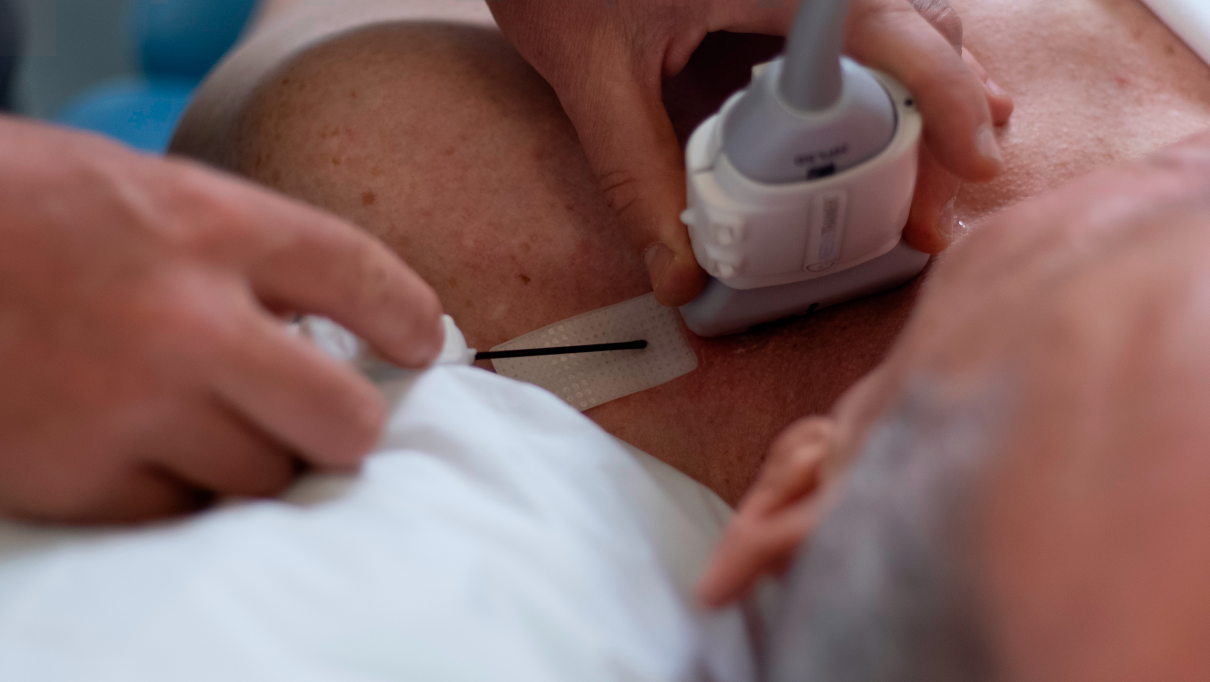According to Intelligent Ultrasound, the answer is yes.
Intelligent Ultrasound is a leading ‘classroom to clinic’ ultrasound company, specialising in providing real-time, virtual reality simulation for the ultrasound training market (‘classroom’) and artificial intelligence-based clinical image analysis software tools for the diagnostic medical ultrasound market (‘clinic’).
The company’s latest innovation, NeedleTrainer, combines both these technologies of AI-based anatomy recognition and augmented reality needle simulation to assist healthcare professionals to master ultrasound-guided needling in a safe environment during real-time scanning on real subjects.
Launched in 2021, NeedleTrainer is already being adopted by regional anaesthesia schools, including Health Education and Improvement Wales (HEIW), to address the increased emphasis placed on ultrasound-guided regional anaesthesia (UGRA) in an environment where there is limited clinical opportunity to accommodate learning.
 In common with other forms of ultrasound-guided needling, UGRA is a practical skill which can broadly be split into two parts; acquiring and interpreting an optimal ultrasound image of the relevant sono-anatomy, followed by needle-probe manipulation to maintain visualisation of the needle tip on the ultrasound image as it is advanced to the target where local anaesthetic is deposited.
In common with other forms of ultrasound-guided needling, UGRA is a practical skill which can broadly be split into two parts; acquiring and interpreting an optimal ultrasound image of the relevant sono-anatomy, followed by needle-probe manipulation to maintain visualisation of the needle tip on the ultrasound image as it is advanced to the target where local anaesthetic is deposited.
NeedleTrainer uses AI to highlight relevant anatomy on the real-time ultrasound display. This helps a tutor to point out relevant anatomy more easily, and also allows the trainee an opportunity for independent learning. A spring tipped mock needle can be pressed onto the skin of a volunteer whilst they are being scanned with an ultrasound machine so that a virtual needle can be superimposed onto the ultrasound image in real-time. This allows the learner to practice their needle / probe manipulation skills whilst advancing the needle safely towards the target.
The potential for this platform goes beyond regional anaesthesia. NeedleTrainer’s technology is already being used to help trainee radiologists develop hand-eye coordination for needle insertion. As new AI models are created, support will be added for relevant anatomical targets for interventional radiology such as liver biopsy, cyst drainage, etc.
 Outside interventional radiology, AI is already being integrated into ultrasound machines to support practitioners whilst they are scanning within day-to-day clinical practice. For example, GE Healthcare’s SonoLyst X/IR on the Expert 22 and SWIFT machines automatically recognises protocol adherent views from the 20-week anomaly scan, assessing them against the criteria for each view. This helps less experienced sonographers have a real-time ‘peer review’ of their images, and also has workflow benefits by ensuring that the scan is complete and no images have been inadvertently missed. Similar technology, together with real-time highlighting of normal anatomy, will no doubt move into other clinical specialities in the near future.
Outside interventional radiology, AI is already being integrated into ultrasound machines to support practitioners whilst they are scanning within day-to-day clinical practice. For example, GE Healthcare’s SonoLyst X/IR on the Expert 22 and SWIFT machines automatically recognises protocol adherent views from the 20-week anomaly scan, assessing them against the criteria for each view. This helps less experienced sonographers have a real-time ‘peer review’ of their images, and also has workflow benefits by ensuring that the scan is complete and no images have been inadvertently missed. Similar technology, together with real-time highlighting of normal anatomy, will no doubt move into other clinical specialities in the near future.
Dr Dennis Cochlin, consultant in general ultrasound at the University Hospital of Wales, Cardiff commented: “We are at a very exciting time in the development of artificial intelligence in ultrasound imaging. AI is already embedded into many machines, greatly improving the image quality. But that is just the start. This article mentions NeedleTrainer. This is a great example of how invasive procedures can be taught in a safe environment. Then when it comes to the real thing, highlighting relevant anatomy, (or pathology) can make the procedure easier and safer. This is particularly important for the increasing number of practitioners who use ultrasound to guide procedures for who ultrasound is not their main speciality. However, anyone who practices ultrasound guided needling, however experienced, will welcome this. AI will also change the practice of diagnostic ultrasound imaging. Some examples are mentioned. There are potentially many more. Some see this as a threat. I believe that this is not so. I believe that the use of AI will not replace the sonographer, but will greatly enhance the practice of ultrasound, making our scanning more accurate and more rewarding.”
For more information on NeedleTrainer, readers are invited to visit www.intelligentultrasound.com.
This news story has been sponsored by the companies concerned and does not represent the views or opinions of RAD Magazine.


